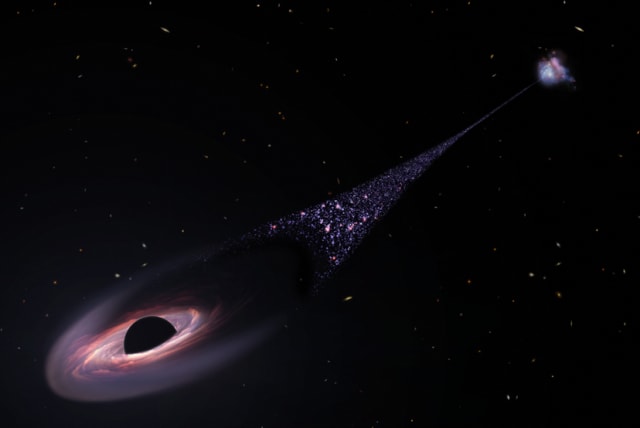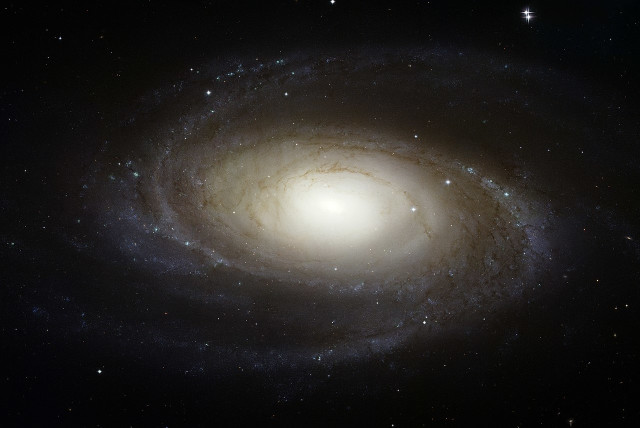The mystery of the runaway black hole - study

A mysterious trail of stars puzzled scientists for some time. While a theory posited this to be a supermassive black hole passing through a gas cloud, a simpler theory has now emerged.
Scientists believe that a thin linear object was found in space is a galaxy without a bulge, according to a new study on the object.
When the object was first discovered, some scientists theorized that it was the trail of a supermassive black hole (SMBH), that was kicked out of its galaxy by a slingshot effect - this would have been the first observation of this phenomenon.
The simpler explanation
But as is often the case, other scientists recently found a better, meaning simpler, solution. In a peer-reviewed study recently published in Astronomy & Astrophysics, researchers at Instituto de Astrofísica de Canarias (IAC) instead explain their theory that this could simply be a galaxy without a bulge, seen edge-on.
This means that while other galaxies have a tighter cluster of stars in the center, this potential galaxy does not.
“The motions, the size, and the quantity of stars fits what has been seen in galaxies within the local universe” explains Jorge Sanchez Almeida, IAC researcher and first author of the article. "It’s a relief to have found the solution to this mystery, the new proposed scenario is much simpler. In one sense it is also a pity, because the existence of fleeing black holes is expected, and this could have been the first one to be observed."
The researchers reached their conclusion after comparing the details of known so-called thin or flat galaxies, which are relatively common, to those of the object.
Mireia Montes, an IAC researcher and a co-author of the article explained that “When we analyzed the velocities of this distant structure of stars we realized that they were very similar to those obtained from the rotation of galaxies, so we decided to compare a much closer galaxy, and found that they are extraordinarily similar.”
The scientists took data of a well known local galaxy without a bulge called IC5249, including the rotation curve, stellar mass, extension, width, and surface brightness and compared them to to mysterious object.
“We also looked at the relation between the mass of the assumed galaxy and its maximum velocity of rotation, and discovered that indeed it is a galaxy which behaves like a galaxy,” stated Ignacio Trujillo, another researcher who took part in the study. “It is an interesting object, because it is quite a large galaxy at a very large distance from Earth, where the majority of the galaxies are smaller,” he added.
Jerusalem Post Store
`; document.getElementById("linkPremium").innerHTML = cont; var divWithLink = document.getElementById("premium-link"); if (divWithLink !== null && divWithLink !== 'undefined') { divWithLink.style.border = "solid 1px #cb0f3e"; divWithLink.style.textAlign = "center"; divWithLink.style.marginBottom = "15px"; divWithLink.style.marginTop = "15px"; divWithLink.style.width = "100%"; divWithLink.style.backgroundColor = "#122952"; divWithLink.style.color = "#ffffff"; divWithLink.style.lineHeight = "1.5"; } } (function (v, i) { });

